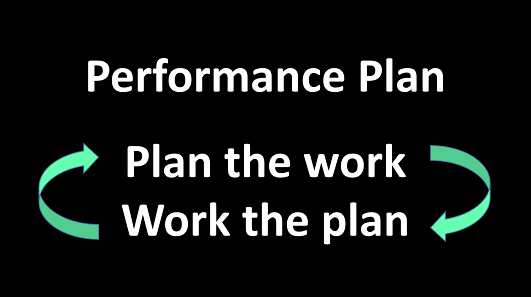 Performance and Development Plans
Performance and Development PlansBy Gideon T. Rasmussen, CISSP, CRISC, CISA, CISM, CIPP
Performance and development plans help you meet your career goals and can also maximize your chances for receiving a healthy bonus at the end of the year. Here are five steps to drive your career forward:
Step 1: Identify your career goal
Select a goal from these three options: (1) stay in your current role, (2) transition laterally to another team or (3) pursue promotion (no promises).
Step 2: Establish performance goals for the year
A Performance Plan challenges the employee to be a change agent, such as creating something new or significantly changing something.
Identify three to five goals that provide value to the company. Here are high level examples for inspiration:
Provide metrics and targets so it is clear whether you met or exceeded each goal. Here is an example of a performance goal:
Goal # 1: Influence Risk Mitigation
Security issues either need to be remediated within standards or documented
with a Plan of Action and Milestone with executive sign-off.
Metric: 90% or higher
Target: 9 months in 2025
Step 3: Establish professional development goals
A Development Plan focuses the employee on gaining new skills or capabilities or on making a change in behavior.
Establish two to three professional development goals. Think of skills and capabilities that enable your next move.
If you plan to stay in your current role, identify goals that will make you more effective or efficient. If you plan to transition to another team, consider a goal that includes working with them as an alternate duty (e.g. on a project). If you are an individual contributor pursuing promotion to a leadership role, demonstrate leadership by developing project management, public speaking and mentoring skills. Review the leadership competencies library within your organization or on the Internet.
View your goals from the other side of the table, from your supervisor or senior leadership's perspective. Your goals should answer the 'so what' question from a business perspective.
Consider leveraging this book for professional development advice: FYI: For Your Improvement - Competencies Development Guide. Use the book as a reference, meaning that you have identified an area of professional development and you look up advice on that topic.
Step 4: Have a conversation with your manager
Schedule a performance plan meeting with your manager. Start by discussing your career goal (e.g. to pursue promotion). Next, review your performance and development goals for the year.
Ask questions about specific goals as appropriate (e.g. Would you assign a project to me so that I have an opportunity to demonstrate leadership?).
Step 5: Track your progress throughout the year
Add your performance and professional development goals to your ToDo List so the goals are at your fingertips and you can update progress as it occurs. Schedule a reminder on your calendar to update content in the performance web application periodically (e.g. once per month). Remember to focus on your core duties to a high degree of quality throughout the year. That is foundation of performance. An exceeds employee does their job and goes above-and-beyond to achieve results that are meaningful from a business perspective.
Begin executing on your plan early in the performance cycle. While you technically have 365 days, the actual time period is shorter than that. Some will wait until strategic goals are passed down in February. I advise against that. If you write goals that align to the mission/vision of your program, they will likely align to high level strategic goals. In the rare case that something is off, it is typically one goal you can adapt to. Find out when executives meet to discuss performance ratings. You need to have your goals complete by then operationally (e.g. late October or early November).
In closing…
Sanity Check: Executing on your performance plan does not guarantee an exceeds rating, a large bonus or promotion. Most organizations only allow 5-10% of employees to receive an exceeds rating. There is a performance calibration process, where managers present candidates for exceeds ratings. Executives evaluate the pool of candidates and decision who ultimately is rated exceeds. Here is an analogy for performance calibration: When you are playing a sport with your child in the yard, you are impressed and proud of their performance. When your child joins a team and competes with their peers, your perceptions of their performance may change. Ultimately all employees are evaluated and only the highest performing among the group will be rated as exceeds. You can increase your odds by providing your manager with a list of accomplishments one month before calibration.
It will typically take 2-3 years of demonstrating leadership before an individual contributor will be promoted to a management role. This should be expected. Executives are conservative and want to be certain that an employee will be successful before promoting them.
Leaders: I have always viewed it as our role to get employees to their next role, "to get them where they're going". Having that focus is selfless (e.g. when you help an exceeds rated employee leave for another team). Acting in that manner also defines us as leaders. We are focusing on the best interests of the employee and the company. Many companies require employees to stay in a role for at least a year before transferring to another role internally. Restricting movement beyond that will only cause the employee to leave the company, which results in a loss of institutional knowledge. If an employee is a single point of failure, designate an alternate and establish procedures and cross training.
One of my favorite mantras is “Plan the work, work the plan”. Adopting that approach in practice will serve you well.
Click here for more professional development tips